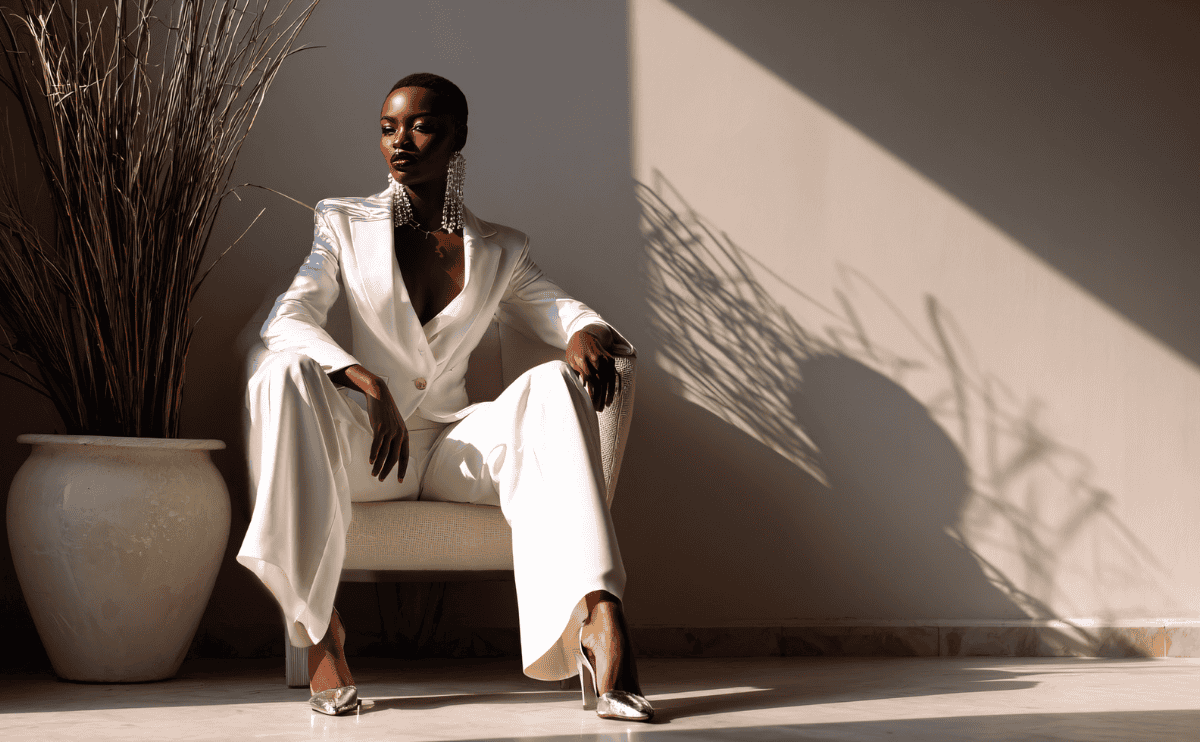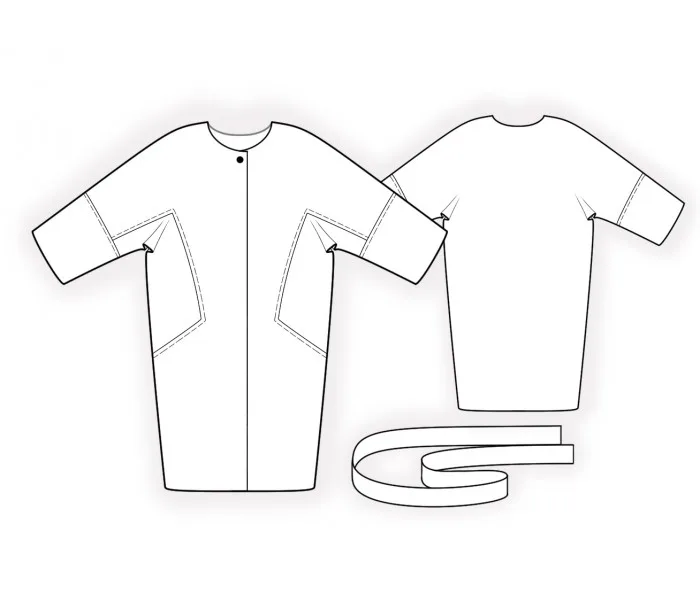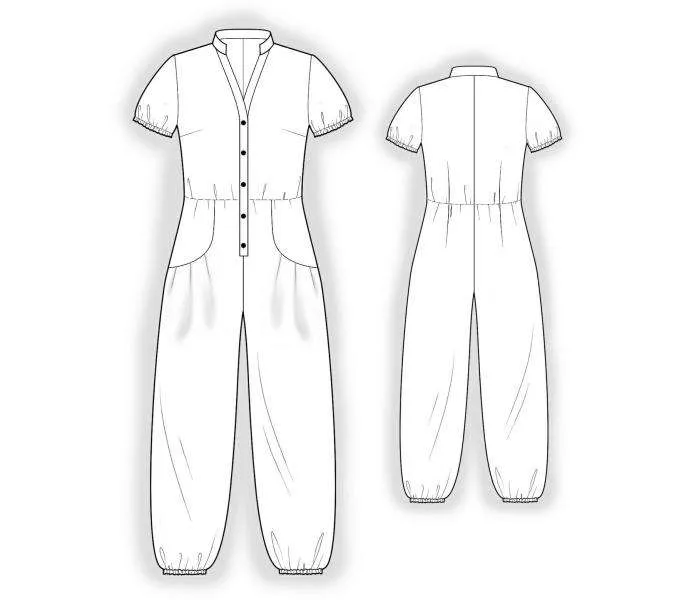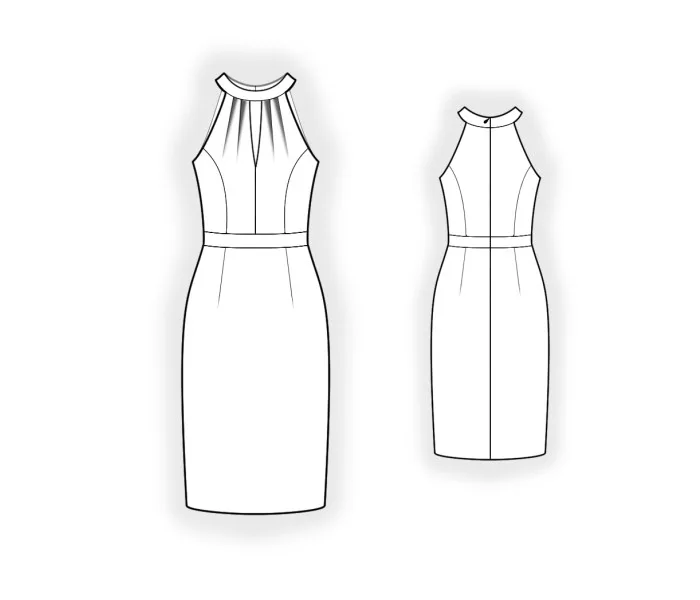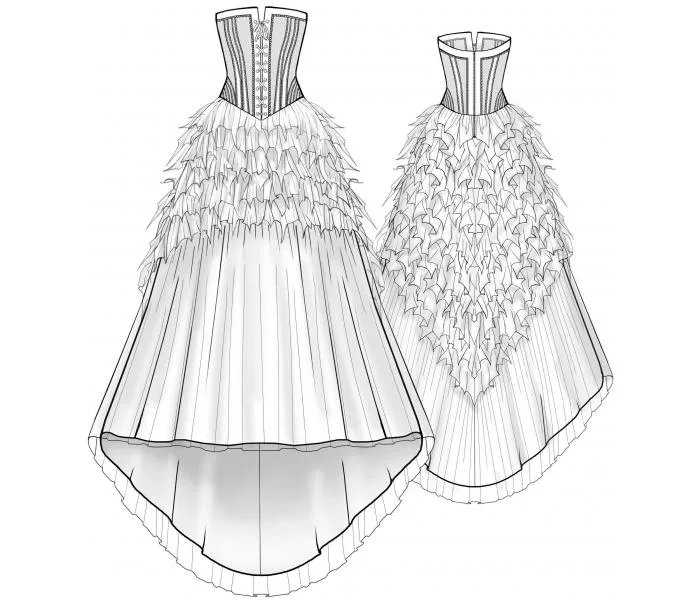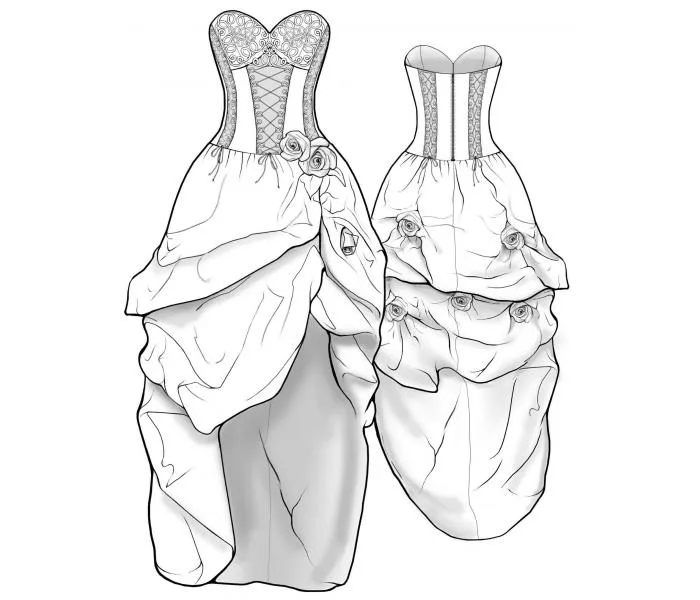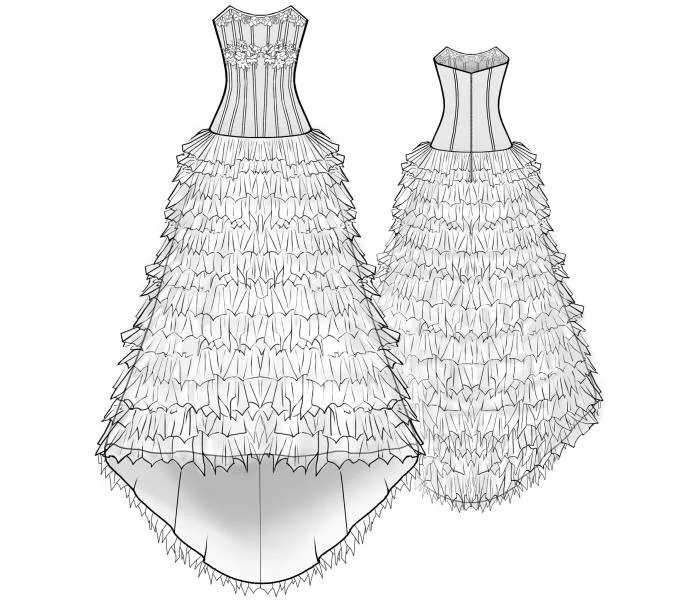Pantsuit vs suit — the two terms sound similar, but they aren’t identical. While both are tailored ensembles that convey structure and elegance, they come from different histories, express different values, and shape the body in unique ways. What began as a traditional men’s suit evolved into a symbol of refined authority, while the pantsuit became a statement of modern femininity and independence.
In this article, we explore the origins, construction differences, symbolism, styling, and when to choose a pantsuit vs suit for business, formal events, or personal expression.
What Is a Suit?
A suit is a coordinated set of garments—typically a jacket and trousers—made from the same fabric. Suits originally belonged exclusively to men’s formalwear. Over time, they evolved into business attire, wedding attire, and eveningwear for both men and women.
Key features of a suit:
- Matching jacket and trousers (or skirt for women’s suits).
- Structured shoulders, tailored waist, lapels, and buttons.
- Fabric consistency—same material, color, and texture.
- Traditionally worn with a dress shirt, tie, and leather shoes.
The traditional suit is rooted in menswear tailoring, military uniforms, and aristocratic European fashion. It is conservative, timeless, and designed to preserve tradition and etiquette.
What Is a Pantsuit?
A pantsuit (also spelled pant suit) is a two-piece outfit for women consisting of a tailored jacket and matching trousers. What makes it different from a traditional suit isn’t just fabric or design—it is social significance.
A brief history:
-
1920s–1930s: Coco Chanel and Marlene Dietrich first wore masculine-inspired jackets with trousers.
-
1960s–1970s: Yves Saint Laurent introduced Le Smoking, a tuxedo-style pantsuit for women.
-
1990s: Hillary Clinton popularized the pantsuit as a symbol of power, professionalism, and equality.
-
Term “Pantsuit Rebellion”: A movement where women wore pantsuits as a political statement during the 2016 U.S. election.
Today, the pantsuit represents freedom, confidence, and female empowerment—while still remaining elegant.
Pantsuit vs Suit – Key Differences
| Feature | Suit | Pantsuit |
|---|---|---|
| Origin | Men’s tailored attire | Women’s version of the suit |
| Components | Jacket + trousers (or skirt) | Jacket + trousers (only) |
| Fit | More structured, traditional tailoring | Often softer tailoring, shaped for female body |
| Social meaning | Formality, professionalism | Empowerment, modern femininity |
| Typical fabrics | Wool, tweed, flannel | Wool, crepe, stretch suiting, silk blends |
| Where it’s worn | Business, weddings, ceremonies | Offices, fashion shows, politics, eveningwear |
| First popularized by | Beau Brummell, Savile Row tailoring | Yves Saint Laurent, Hillary Clinton |
Pantsuit vs Suit: When to Wear Each?
Best Occasions for a Classic Suit:
- Business/formal meetings
- Corporate interviews
- Weddings (for both men and women)
- Law, finance, or diplomatic settings
Best Occasions for a Pantsuit:
- Stylish office wear
- Evening events or modern black-tie alternatives
- Fashion-forward social gatherings
- Political speeches, public appearances
- Anytime you want comfort but authority
Think of it this way:
A suit tells the world you follow the rules.
A pantsuit tells the world you are rewriting them.
Pantsuit vs Suit: Style Details – How They’re Tailored Differently
Even if both garments consist of a jacket and pants, their construction varies.
Jackets:
-
Suit jackets: Strong shoulder pads, classic lapels, straight cut.
-
Pantsuit jackets: Softer shoulders, cinched waist, sometimes longer or double-breasted.
Pants:
-
Suit pants: Classic straight or slightly tapered fit.
-
Pantsuit trousers: They vary—wide-leg, flared, cigarette, high-waisted, pleated.
Fabrics:
-
Both use wool suiting, but pantsuits often include lighter, more fluid textiles like crepe, stretch wool, satin blends, or silk mikado for evening wear.
Colors:
-
Suits favor navy, black, grey.
-
Pantsuits experiment with bold colors—ivory, blush pink, emerald, tartan, or even metallic fabrics.
Cultural Meaning & Symbolism
Historically, only men wore suits. Women wearing trousers was considered rebellious, even illegal in some countries.
The pantsuit became a symbol of resistance.
-
1972: U.S. Congress finally allowed women to wear trousers on the Senate floor.
-
2016: “Pantsuit Nation” formed—a global group of women wearing pantsuits in support of political freedom and gender equality.
-
Today: The pantsuit is a blend of rebellion and refinement.
Sewing & Patternmaking Perspective (If You Want to Make One)
For designers or sewists, the construction of a pantsuit vs suit has different priorities:
| Sewing Focus | Pantsuit | Traditional Suit |
|---|---|---|
| Fit at waist/hip | Curved for female shape | Straight, classic fit |
| Bust shaping | Darts, princess seams | Minimal shaping |
| Shoulder construction | Can be soft or structured | Always structured |
| Pattern adjustments | Requires bust/waist shaping | Mostly straight seams |
| Fabric flexibility | Can use stretch or crepe | Usually stable wool |
| Interfacing | Light to medium | Medium to heavy |
If you sew professionally or use pattern software (like CLO3D or CAD), you can rework standard suit patterns into pantsuits by adjusting the waistline, shoulder slope, and hip curve.
Modern Fashion – Are Pantsuits Still in Style?
Absolutely. The pantsuit has evolved from corporate wear to high fashion.
-
Designers like Dior, Alexander McQueen, Max Mara, Saint Laurent, and Schiaparelli regularly include pantsuits in their collections.
-
Bridal pantsuits are replacing wedding dresses for modern brides.
-
Oversized 1990s-style pantsuits are trending—especially with wide-leg trousers and double-breasted blazers.
-
Sustainable fashion encourages timeless, re-wearable, tailored pieces, making pantsuits more relevant than ever.
Final Thoughts: Pantsuit vs Suit – Which One Should You Choose?
Choosing between a pantsuit and a suit depends on personality, occasion, and comfort.
Choose a traditional suit if you want:
✔ Classic elegance
✔ Formal tradition
✔ Minimal risk, maximum professionalism
Choose a pantsuit if you want:
✔ Confidence with comfort
✔ Feminine tailoring with strength
✔ A subtle, modern rebellion
In reality, both are timeless. Whether structured like Savile Row or draped like Yves Saint Laurent, suiting will always symbolize strength, discipline, and beauty.

